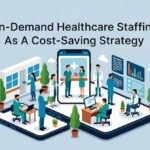Patient safety is a paramount concern in healthcare, and hospitals and medical facilities play a pivotal role in ensuring the well-being of their patients. In today’s complex healthcare landscape, where advancements in medical science and technology continue to evolve, it’s crucial for healthcare organizations to prioritize patient safety as a foundational principle.
This article explores five key strategies that hospitals and medical facilities can adopt to prioritize patient safety and care. These strategies not only enhance the quality of care but also foster trust and confidence among patients and healthcare professionals.
1. Cultivate a Culture of Safety:
Creating a culture of safety is the foundation upon which all other patient safety strategies are built. It starts with fostering an environment where healthcare professionals are encouraged to speak up about potential safety concerns without fear of reprisal. Hospitals should establish clear channels of communication for reporting incidents and near-misses, promoting a culture of transparency and continuous improvement. Leadership must lead by example, demonstrating a commitment to patient safety that permeates throughout the organization.
2. Enhance Communication and Collaboration:
Effective communication is paramount in healthcare settings where information transfer among healthcare professionals is critical. Implementing standardized communication tools and techniques, such as the use of SBAR (Situation, Background, Assessment, Recommendation) or electronic health records (EHRs), can help prevent misunderstandings and errors. Additionally, promoting interdisciplinary collaboration and teamwork ensures that every member of the healthcare team is aligned in delivering safe and high-quality care.
3. Harness Technology for Patient’s Safety:
Embracing technology is essential for advancing patient safety and improving the overall quality of healthcare delivery. Hospitals and medical facilities can leverage electronic health records (EHRs) to maintain accurate patient data, reduce medication errors, and streamline care coordination.
And in terms of patient’s safety and care, healthcare institutions can leverage Rightspot PH indicators designed by RightBio Metrics to confirm NGO/ OG tube placement during enteral feeding procedures. These innovative indicators provide an additional layer of safety by ensuring that feeding tubes are correctly positioned, preventing potential complications.
Lastly, patient monitoring devices, fall detection systems, barcode medication administration, medical imaging tech, smart bed, and patient engagement apps are other technologies that can contribute to patient’s safety and care.
4. Invest in Continuous Education and Training:
Healthcare professionals must be equipped with the latest knowledge and skills to provide safe and effective care. Hospitals should invest in ongoing training and education programs to keep their staff up-to-date with best practices and emerging trends in healthcare. Regular simulations and drills can also help healthcare teams practice responding to critical situations, reinforcing their preparedness to handle unexpected events.
5. Establish Robust Quality Improvement Programs:
Continuous quality improvement is a cornerstone of patient safety. Hospitals and medical facilities should establish robust quality improvement programs that involve systematic data collection, analysis, and action planning. By identifying trends, root causes of adverse events, and areas for improvement, these programs enable organizations to implement targeted interventions and preventive measures.
Conclusion
In conclusion, prioritizing patient safety is not just a moral imperative but a strategic necessity for hospitals and medical facilities. The five key strategies discussed in this article provide a comprehensive roadmap to enhancing patient safety. By integrating these strategies into their operations, healthcare organizations can create an environment where patients receive the highest standard of care, and healthcare professionals can work confidently and effectively.
Read Also
- Creative Approaches to Alleviating Healthcare Staff ShortagesHospitals and clinics are facing staff shortages, which makes it harder to take care of patients well. Finding simple and useful solutions is very important. Easy changes like flexible work hours, good training, and chances to grow can help staff stay happy. Technology, like online doctor visits and helpful tools, can make work easier. Smart… Read more: Creative Approaches to Alleviating Healthcare Staff Shortages
- Understanding the Role of Sterilizers in Healthcare FacilitiesHave you ever wondered how hospitals keep their equipment safe enough to use on dozens of patients every day? Most people never think about what happens behind the scenes, yet these hidden steps play a huge role in patient safety. Sterilizers are part of that system, working quietly to remove harmful germs before any instrument… Read more: Understanding the Role of Sterilizers in Healthcare Facilities
- Building Healthcare Access Where It’s Needed Most: A Local First ApproachHealthcare shouldn’t depend on where you live. But in the U.S., it often does. If you’re in a big city, you likely have options. If you’re in a small town or an underserved neighbourhood, it’s a different story. To fix this, more healthcare leaders are turning to a local-first approach. That means putting clinics and… Read more: Building Healthcare Access Where It’s Needed Most: A Local First Approach
- Revolutionizing Patient Engagement: Innovative Solutions for Improved Care and Treatment SuccessNavigating healthcare system can often feel overwhelming for patients. Between appointments, prescriptions, and treatment regimens, it’s easy for crucial details to get lost in the shuffle. That’s why effective patient engagement and support solutions are more important than ever. Companies like Serva Health, with their pharma hub services, are stepping up to ensure that patients… Read more: Revolutionizing Patient Engagement: Innovative Solutions for Improved Care and Treatment Success
- On-Demand Healthcare Staffing As A Cost-Saving StrategyThis is an exciting and challenging time for the healthcare industry. Technology is advancing almost faster than humans can keep pace. New legislation is creating fresh challenges for the future of healthcare, and the shifting population demographic continues to place more pressure on healthcare facilities. Amidst these changes, healthcare facilities are facing a critical staffing… Read more: On-Demand Healthcare Staffing As A Cost-Saving Strategy






